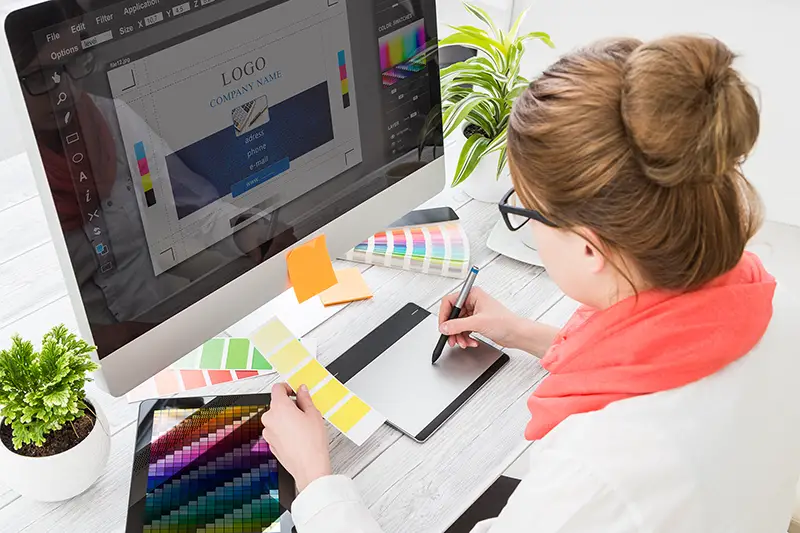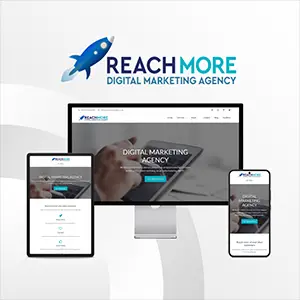Click here to get this post in PDF
The company’s logo can be a significant factor in the success of your brand. A logo is a graphic representation of your brand. However, if well designed, it can be so much more.
A great logo design firm helps you to communicate a lot about the organization logo, communicating what they do, why they are special, and something about their character.
Logos can also evoke a special feeling in clients, reinforcing why they care about your brand and how it makes them feel.
So how are you going to cram so much detail into one little picture?
It’s not so difficult to achieve. You can achieve it with a considerable degree of planning and creativity. It is a huge responsibility to produce one symbol that essentially acts as a conceptual embodiment of an entire brand.
Luckily, some guiding principles will offer some inspiration in developing a logo that embodies the brand’s true identity. And even better, there are plenty of design tools and logo creators to help with the initial design process of your brand identity and sharing it with the rest of the world.
You’ll need to put together some ideas about the brand overall before we discuss the core elements of logo design. You must consider the target audience and know what you want to say in order to create a successful and attractive logo design for your brand.

Who is the target audience, and what matters to them?
In creating a relevant logo, it is important to know who you want your message to impact.
- What do customers value about your brand? Is it service, speed, quality?
- Are you cutting edge? More unique than your competition?
- What inspires trust and loyalty in your company? Ask your customers if you’re not sure what they love about your brand.
- What do you want to express in your logo? This goes a little deeper than the products or services you provide.
- What makes you better or different, and why would anyone prefer your brand over another?
Integrate your company’s ideas into your messaging to ensure that it represents what is important to your customers.
When you understand what your logo should communicate, you can start designing your logo with these seven components in mind.
Seven important elements of a successful and attractive logo design for your brand
Simplicity
Simplicity should always stay at the top of your mind when designing a logo. It’s easy to get off-track and try to incorporate all your brilliant ideas into one image, but simple logos perform better.
Very complicated logos do not express trust or professionalism, and they frequently leave the audience feeling puzzled. eCommerce businesses should take the element of simplicity more seriously.
Check out the giants in your industry – AliExpress, Amazon, eBay, etc. They all have simple logos which makes them easily recognizable. A clear and sleek logo conveys strength, provides the audience with assurance, and is more memorable.
Relevance
Designing a great logo is more than just a cool design. The logo stands for something and should give a strong message of what the brand provides.
A relevant logo is targeted and purposeful. Know what counts and create a design that appeals to your clients—for example, color selection.
You have a rainbow of colors to choose from but knowing why you should choose a particular color would put you at a tremendous advantage relative to simply choosing your favorite color.
Firstly, what appeals to you may not be appealing to your audience. Secondly, certain emotions are expressed by colors.
Think about the emotion you want your customers to feel towards your brand. Yellow radiates enthusiasm and happiness, red is synonymous with youth and excitement, while faith, power, and durability are expressed by blue.
Versatility
Remember, the company will use the logo in different ways throughout its lifecycle. Picture your logo as the anchor on your website, brochures, business cards, and even t-shirts.
Bear in mind that your logo will need to adapt to different platforms or applications that aren’t always ideal.
While also retaining their identity, logos can be printed to be very big (think billboards) or very, very small (like on a pen). The logo’s background color and height can change, but your logo should be flexible enough to appear in black and white as well.
Certain elements, such as script fonts, may not allow themselves to be scaled down for a social media page. Therefore, in designing your logo, make sure to have versatility in mind.
Use Appropriate Colors
Think about the message your color sends to the customers while choosing a color for your logo.
Do the colors emphasize and reinforce, or distract or neutralize, the desired central message/personality/mood you are trying to express with the logo?
Blue, for instance, expresses trust, commitment, and freshness. In banking or finance, the color blue is popular. Green expresses life, nature, and cleanliness.
Consider colors that also fit into white and dark backgrounds perfectly. Since logos are mostly printed in black and white, choose a logo design that is feasible and strong on black and white.
As referenced through the color emotion guide below, you can see a wide range of colors and the many different emotions associated with each of them. Also, take a moment to look at each of the brand logos designed displayed and see if their business model and services match the emotions that their colors represent.
While gradients have an aesthetically pleasing impact on computers, potential future logo applications, such as on letterheads, business cards, and merchandise, should be considered. Will the logo be easy to print and reproduce on all forms of media?
Uniqueness
It is a smart idea to study other logos for inspiration. Just be careful not to design your logo to be too much like other logos out there. Your logo should set you apart, be clearly identifiable as yours, and not cause you to be mistaken with another brand.
Timeless
Trends are fine, but innovation is way better. (And sometimes, fads can be deadly). A logo should have a long life expectancy. Over time, it will grow and shift, but the more it remains the same at its core, the more you will get brand loyalty over time. Examples: Coca-Cola, Rolex, Dior.
An effective logo will have a sense of timelessness to it. It is more likely that a logo that feels anchored in a particular period would feel obsolete or need to be repurposed very quickly. The best logos do not change very much, but they remain fresh and vibrant for a long time.
Memorable
A perfect first step in creating a recognizable logo is to stick with the “simplicity principle”. Your logo design should be so simple that, with one glance, your audience can recall its specific element.
A customer may only see the logo for a couple of seconds, depending on the channel or platform. Is this going to be enough to deliver a glimpse of what the brand is all about? It would be quickly forgotten if the logo is too complex.
How to Create the Best Logo Design Your First Time Around
With more businesses and brands on the internet than ever before, it’s important to make sure you have all of the necessary skills, tools and expertise to compete. At the same time, it’s important to build a unique business and brand in the process — and one of the best ways to accomplish this is with an attractive logo design of your own.
Keep these core elements in mind as you start creating your best visual identifier, to ensure you produce a logo that makes a compelling message about your brand and resonates with your audience!
You may also like: What Is UX Design? The Basics Explained


